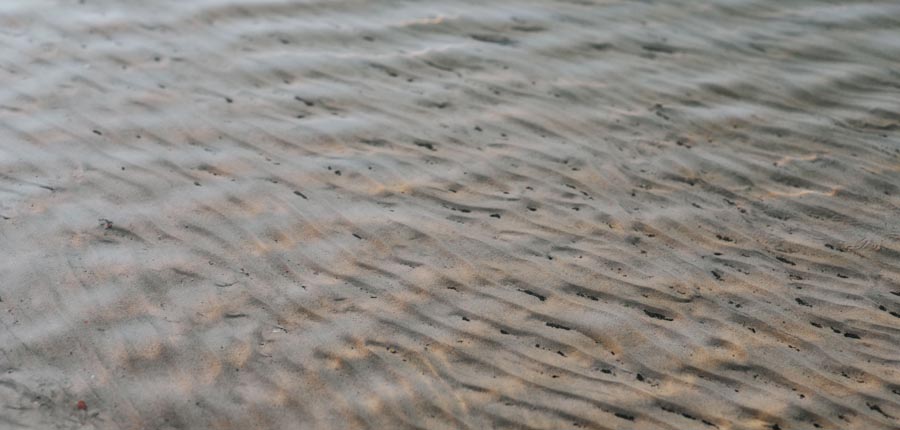
Sandpit is an amazing tool for a child’s growth.
It helps with gross motor skills.
Plus, it allows children to socialize with others.
But there is good sand, better sand, and the best sand for your sandpit.
Which is which?
Let’s find out…
Whitewashed sand is one of the best types of sand for the sandpit. It is fine to the touch and has no sharp edges that may hurt children. Whitewashed sand is basically just silica sand that has been washed so that it’s cleaner and safer for playing children. Play sand is similar and is packed precisely for play areas like sandpits.
What Is a Sandpit?
People love going to the beach for the sand on their feet and the aqua-blue water.
But there are other places to enjoy the sand.
There are sandpits in playgrounds and other children-friendly spaces.
You can even have a sandpit at home.
Why?
Sandpits are actually amazing for children’s growth.
Check out the following benefits for children using sandpits:
Develops Gross Motor Skills
Children need gross motor skills to do everyday activities.
Playing in the sandpit is a great way to develop gross motor skills without children thinking it’s an exercise or chore to learn.
They will have fun while acquiring much-needed fine motor skills.
Inspires Creativity
Children can be as creative as they want to be in the sand.
They can make sand castles or roads and use their cars to race around the pit.
Kids can also use the sandpit as a canvas for drawing things; they can draw with a stick or their fingers.
Encourages Social Interaction and Bonding
Playing in the sandpit is not just fun for kids.
Parents could also bond with their children in the sandpit.
And children can play with their fellow youngsters in the pit.
They could collaborate to make one fantastic sandcastle.
What Are the Types of Sand Use in Sandpits?
The following are the most common types of sand and their advantages and disadvantages when used as sandpit sand.
Beach Sand
Beach sand is obviously sand you find on the beach. If it’s good enough for you to walk barefoot on the beach, then it must be good enough for the sandpit.
Pros
- Natural
- Non-toxic
- Soft
- Smooth
- Cool to the touch
Cons
- It is illegal to gather sand on the beach for your sandpit
Builders Sand
Is builders sand okay for a sandpit?
As the name implies, builders sand is used for building things or construction.
It is commonly used for bricklaying because of its fine texture.
It is compressible too.
Unfortunately, it cannot be used in the sandpit, so there are no pros.
Cons
- Too coarse
- May contain large and sharp pieces
- May contain bacteria
Sharp Sand
Brickwork, mortar-mixing, paving, and smoothing floors use builders sand and sharp sand.
Builders sand is much softer than sharp sand, which, as the name implies, is sharp.
That’s also because it contains clay and iron so that it can be a more sturdy base.
Can you use sharp sand for sandpit?
If you can’t use builders sand for a sandpit, then the more you cannot use sharp sand for it.
Cons
- Too coarse
- Not purely made of sand
- May be toxic to children
Kiln Sand
Kiln sand is sand that has been kiln-dried so it no longer has moisture content.
It is ideal for filling the joints of block paving and paving slabs because the dryness would prevent them from moving.
Can you use kiln-dried sand for sandpits?
Technically, you can.
Pros
- Very fine to the touch
Cons
- Too dry and won’t clump together to make sand structures
River Sand

Like beach sand, river sand is actually natural sand from the river.
It is made from the process of erosion unlike other types of sand that are usually created from crushing rocks.
River sand can be used in the sandpit.
Pros
- Natural
- Non-toxic
Cons
- Naturally coarse because the process of erosion doesn’t guarantee fine sand
- Hard to get
Silica Sand
Silica sand is made up of silica and quartz, which is why it is sometimes referred to as quartz sand.
Sometimes it is also called white sand or industrial sand since it is mainly used for foundry, glassmaking, and other industrial activities.
It is not a type of sand that should be in sandpits.
Cons
- May contain crystalline silica, which is a carcinogen
- Sand particles may irritate children
Whitewashed Sand
Regular sand or silica sand can be washed and thoroughly cleaned to create softer and much safer sand for the sandpit.
It is called whitewashed since the sand is white.
It is one of the best types of sand you can use in the sandpit.
Pros
- Soft
- Clean
- Aesthetically pleasing
- Ideal for other play areas
Cons
- May still contain crystalline silica when not cleaned properly
Play Sand
Play sand is sand that is usually packed precisely for the sandpit or other play areas.
It undergoes several processes of washing and cleaning so it becomes softer, cleaner, and safer for the sandpit.
Pros
- It is made specifically for sandboxes and play areas
- Soft
- Clean
- Packed in compliance with government standards
Cons
- Not all sands are packed with high standards, so beware of play sand that contains harmful chemicals
Final Thoughts

Playing in the sandpit is such a fascinating activity.
It is open-ended, so children’s imaginations can run wild.
A child can play on their own or with other children.
Either way, they will develop their gross motor skills and boost their creativity.
But when playing with other children, they can develop their social skills as well.
However, not all sands are ideal for the sandpit.
Beach and river sands are okay, but they are hard to get hold of.
Whitewashed sand and play sand are the best ones because they have been washed, cleaned, and packed for the pit.
